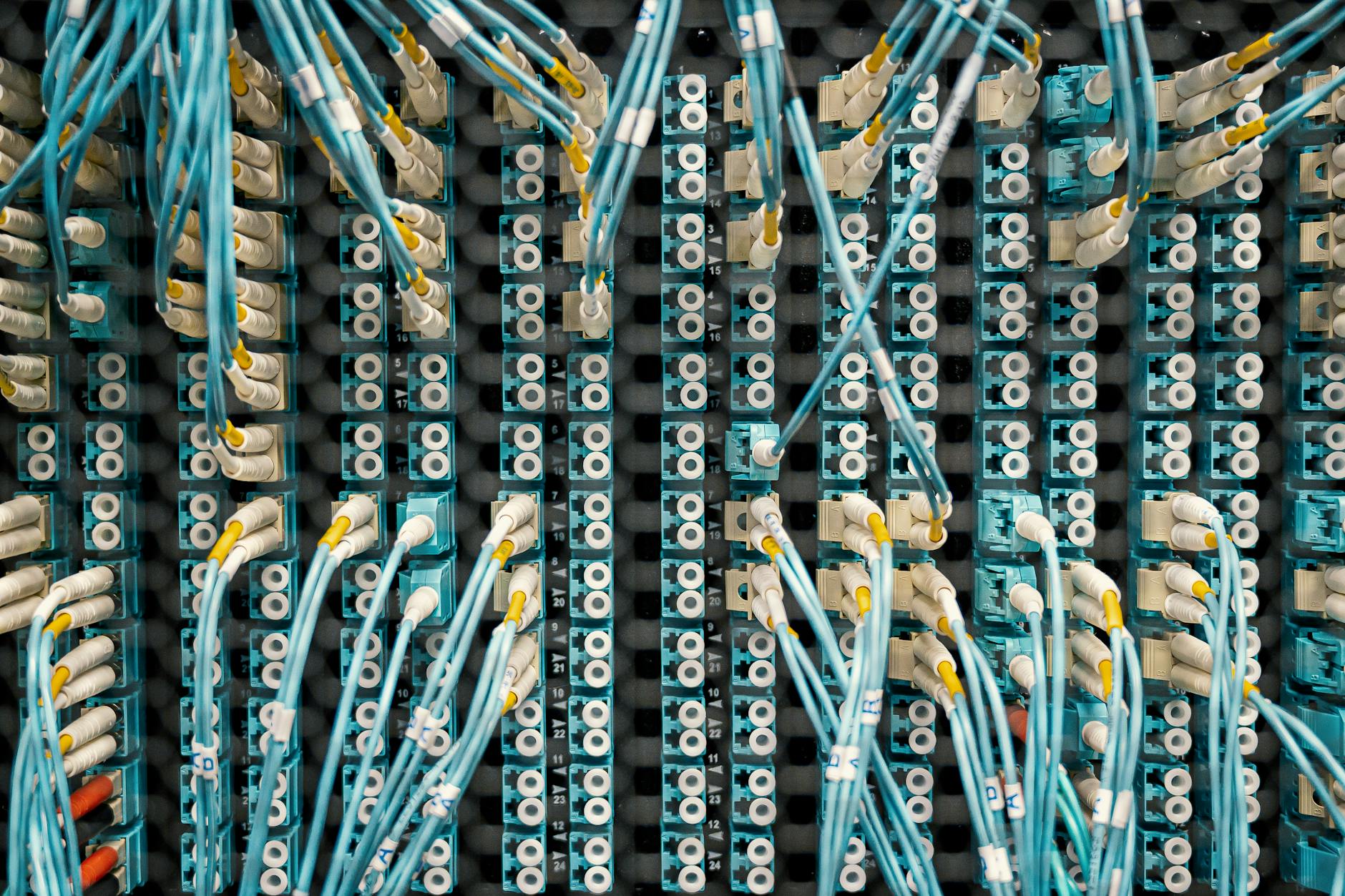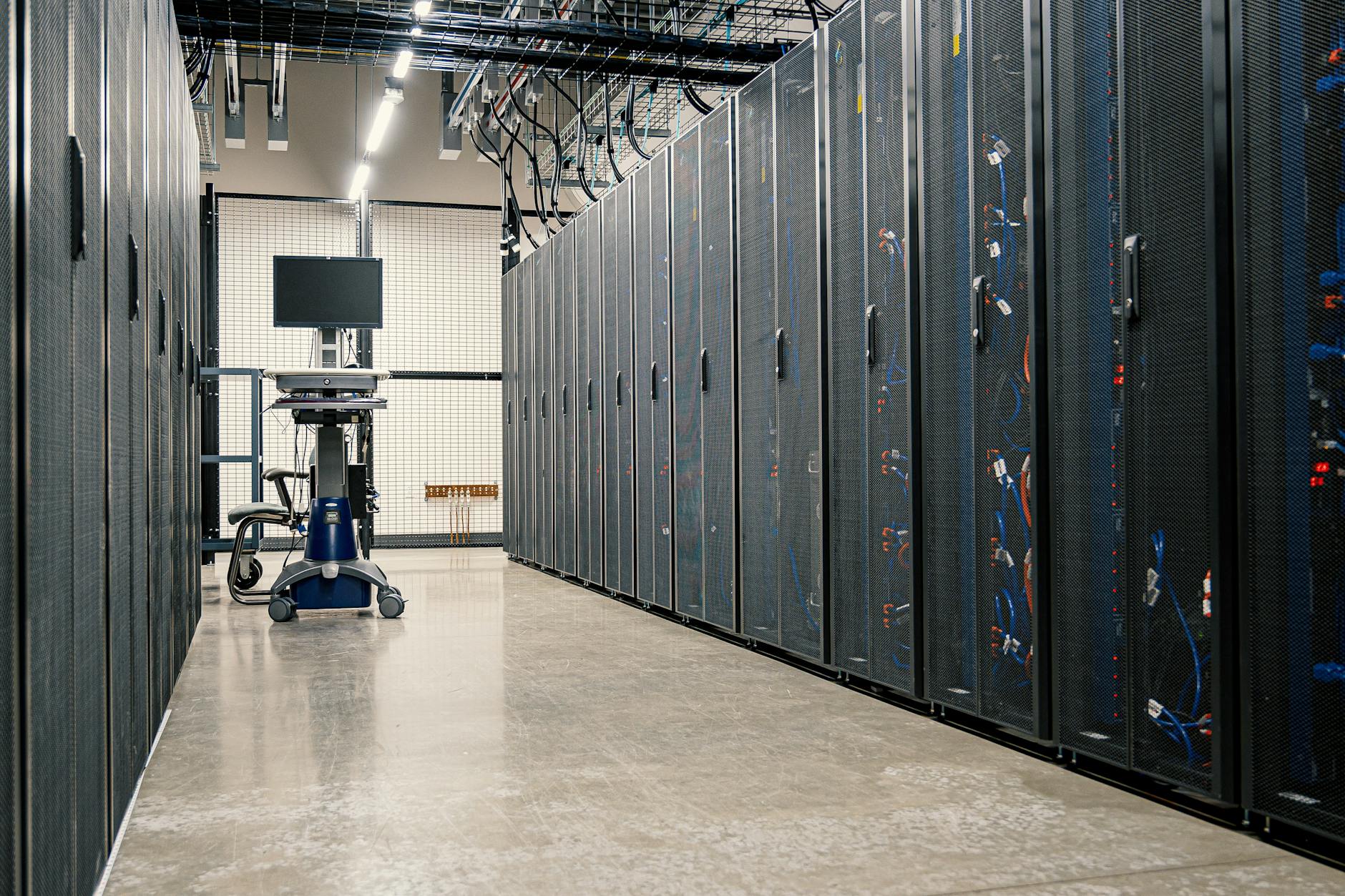The Quest for Speed: Broadband Providers in United States Unveiled
Internet Providers Overview
Gettin’ down to brass tacks in the U.S. internet game ain’t as clear-cut as ordering a cheese pizza. From speedy-freakin’ downloads to snail-paced uploads, the choices are quite a mixed bag for folks like me trying to surf, stream, and socialize in this tech-hungry age. Let me give ya the lowdown on broadband in the good ol’ US of A.
Broadband Scene in the U.S.
So, here’s the scoop: The broadband scene is on a roll. Providers are hustlin’ and bustlin’ to keep up with our ever-growing need for speed. As of the summer of 2023, our median download speed hit 207 Mbps and upload speed’s hangin’ around 23 Mbps, landin’ the U.S. in the sixth spot worldwide—not too shabby (Allconnect).
Check out this quick rundown of speeds around the globe:
| Country | Median Download Speed (Mbps) | Median Upload Speed (Mbps) |
|---|---|---|
| United States | 207 | 23 |
| Singapore | 241 | 24 |
| Chile | 230 | 25 |
| UAE | 220 | 22 |
The fame of 5G is crankin’ up the heat among Internet Service Providers (ISPs), pushin’ them to beef up their infrastructures—some fresh faces might crash the party soon, giving the old-timers a run for their money (Broadband Search).
Internet Flavors to Choose From
When you’re pickin’ your Internet, it’s like choosing ice cream with a bunch of flavors. Each type has its quirks. Here’s what’s cookin’ in the broadband buffet.
DSL (Digital Subscriber Line)
This one’s the reliable old uncle of Internet tech. Sure, DSL might not be the quickest on the block, but it does the job, especially if you’re livin’ out in the sticks.
Cable Internet
Cable internet’s the cool cousin that hooks you up with tele and fast web on the same line. Solid choice for watchin’ Netflix without the spinny wheel of doom.
Fiber Optic Internet
Fiber’s the rockstar here—blazingly fast, no joke. Messages zippin’ through glass fibers like the Flash. Curious about it? Peek at our fiber optic internet providers near me section.
Satellite Internet
For those in the boondocks, satellite’s your buddy. Ain’t the speed demon but gets ya online where cable and DSL throw the towel in.
Mobile Broadband
With 5G happenin’, mobile broadband’s takin’ the subway from ‘meh’ to ‘oh hell yes!’ in terms of speeds. Compare plans on our wireless internet plans comparison page.
Gettin’ the right Internet provider is like findin’ the perfect pair of shoes—what’s comfy for others might not fit ya. Weigh the pros and cons, check your area, and sync up with your lifestyle. Wanna browse more? Swing by our internet service options in the USA page.
Types of Internet Providers
When it comes to getting the best internet in the U.S., you gotta know your stuff. So let’s break down DSL, cable, fiber optic, satellite, and mobile broadband.
DSL Internet Packages
Looking for a budget-friendly option? DSL (Digital Subscriber Line) runs through your old-school phone lines. It’s usually good for the light internet users — think surfing the web, checking emails, and streaming some videos.
| DSL Internet | Speed Range |
|---|---|
| Basic | Up to 10 Mbps |
| Standard | 10-25 Mbps |
| High-Speed | 25-100 Mbps |
If you’re farther out from the main office, your speeds might slow down. But hey, if options are slim, DSL can be your pal!
Cable Internet Packages
Need a bit more oomph? Cable internet’s got your back. It’s great for households with lots of gadgets — gamers, video callers, and binge-watchers rejoice! It uses the same setup as your cable TV, so expect a solid and steady ride.
| Cable Internet | Speed Range |
|---|---|
| Basic | 25-100 Mbps |
| Standard | 100-300 Mbps |
| High-Speed | 300-1,000+ Mbps |
Dollar signs will depend on how fast you wanna go. If you’re after reliability and space to stretch your bandwidth, cable is a tempting pick. Learn more here.
Fiber Optic Internet
Fiber is like the sports car of the internet world — fast and sleek. Uploads and downloads zoom along at matching speeds, perfect for remote work, watching 4K, and intense gaming sessions.
| Fiber Optic Internet | Speed Range |
|---|---|
| Basic | 50-100 Mbps |
| Standard | 100-500 Mbps |
| High-Speed | 500-1,000+ Mbps |
With its speed and dependability, fiber optic is a top pick for speed demons. Curious? Check out what’s available near you.
Satellite Internet
If you’re out in the sticks, satellite might be your only choice. It beams internet down from the sky, but it might have data limits and can lag due to the distance the signal travels.
| Satellite Internet | Speed Range |
|---|---|
| Basic | Up to 25 Mbps |
| Standard | 25-50 Mbps |
| High-Speed | 50-150 Mbps |
No other options? Satellite keeps even the most remote places plugged in.
Mobile Broadband Plans
For those who need to stay connected while wandering, mobile broadband is your pocket internet. It taps into cell networks, so speeds and coverage might change depending on your area and signal.
| Mobile Broadband | Speed Range |
|---|---|
| Basic | Up to 3 Mbps |
| Standard | 3-25 Mbps |
| High-Speed | 25-100+ Mbps |
On the move or in a place where regular broadband is a bust? Mobile broadband is flexible and handy. Compare plans here to see what clicks for you.
Knowing these options will help you find the right internet provider for you. For more, visit our full guide on internet service options in the USA.
Why Your Internet Bill is All Over the Place
What You’ll Fork Over Each Month
So, how much moolah are we talking for internet every month in the good old U.S. of A.? It could be a Starbucks vanilla latte or an arm and a leg. On average, you might be shelling out around $65, according to a peek at 22 internet providers (Forbes). Why such a wild range? Well, those digits depend on the type of internet and who’s delivering your web surfing goodness.
| Type of Service | Cost Range (Monthly) | Average Cost (Monthly) |
|---|---|---|
| DSL | $20 – $50 | $35 |
| Cable | $30 – $100 | $60 |
| Fiber Optic | $40 – $300 | $75 |
| Satellite | $50 – $150 | $100 |
| Mobile Broadband | $20 – $80 | $50 |
Picking the Right Company
Which internet company you give your cash to affects your bill big time. Sometimes, you might be stuck choosing between two lousy options. Mediacom and Comcast Xfinity are some budget-friendly folks to start with—they’ll take your cash starting at $19.99 a month (Forbes). But hey, just because they’re cheap doesn’t mean they’re the best fit. You might care more about speed or service quality.
Try checking up on high-speed internet providers in USA before you make any moves. Get the most bang for your buck.
Sniffing Out Deals and Discounts
Lots of internet companies dangle sweet deals for fresh customers—think deep discounts like it’s Black Friday or something. These deals usually last a hot minute, then poof! That cheap rate you enjoyed might rock up from $40 to $70 after that year. If you like bundling TV and phone into one sweet package, some companies might shave off more dollars.
Here’s a little table to show what promo magic looks like with big-name providers:
| Provider | Promo Rate (Monthly) | Standard Rate (Monthly) | Promo Duration |
|---|---|---|---|
| Comcast Xfinity | $19.99 | $50 | 12 months |
| Mediacom | $19.99 | $49.99 | 12 months |
| AT&T Fiber | $35 | $55 | 12 months |
| Spectrum | $49.99 | $65 | 12 months |
For budget-savvy peeps looking to save, consider bundling or hop on the switching train to snag new-customer rates. Check out our piece on internet service options in USA for more money-wise moves.
To avoid a financial facepalm, peek at both initial sweet deals and what it’ll cost you as time goes by. Browse our wireless internet plans comparison for scoop on plans or explore fiber optic internet providers near me for speedier, more consistent options.
Understanding Internet Speeds
Hey, so figuring out which internet speed is right for you in the U.S. doesn’t have to be more confusing than trying to find the start of a roll of tape. Seriously, the type of connection you pick will make all the difference in how annoyed—or delighted—you are with your time online.
DSL vs. Cable vs. Fiber Speeds
Let’s chat about the big three in internet connections: DSL, cable, and fiber optic. Each one has its own vibe and what it can do for your speed.
- DSL Internet: Need to keep things easy on the wallet? DSL might be your buddy. With speeds from 1 Mbps to 100 Mbps, it’s like a VW Bug of internet options—gets you places, but not exactly in a rush. Runs over the phone lines and you’ll find it mostly in places the city forgot—bless rural America. Just a heads-up, your distance from the main office makes a difference here, like how far you live from the nearest coffee shop affects your caffeine levels.
- Cable Internet: If DSL is your VW Bug, cable is like upgrading to a sporty sedan. You’re looking at 25 Mbps to 1,000 Mbps speeds, which means HD and 4K streaming without the spinning wheel of doom. Good for gaming and those “let’s watch another episode” nights (BroadbandNow).
- Fiber Optic Internet: Now, fiber is the jet plane in this race. Speeds can hit up to 10,000 Mbps, so whether it’s binge-watching, battling zombies online, or remote work, fiber won’t let you down. Upload and download speeds? They’re twins—exactly the same on both sides—and that’s a game-changer (Rural Telecommunications of America).
| Internet Type | Typical Speeds |
|---|---|
| DSL | 1 – 100 Mbps |
| Cable | 25 – 1,000 Mbps |
| Fiber Optic | 100 – 10,000 Mbps |
Importance of Consistent Connection
Nobody wants their Zoom call to freeze when they’re finally about to say something smart. That’s why keeping your connection steady is a big deal. Fiber, in particular, is the cool kid in class with reliable symmetrical speeds—perfect for online games or when multiple gadgets are fighting for bandwidth (BroadbandNow).
Things that mess with your connection:
- Congestion on the network (think internet rush hour)
- How far you are from the provider’s main setup
- Type of internet tech you’re using
Need more info? I’ve got you covered with an overview on high-speed internet providers in the USA.
Impact of Broadband Technology
Picking your internet connection isn’t just about speed—it’s about how dependable it is and how it performs when you’re in the middle of your Netflix marathon. Here’s a little breakdown of what each one brings to the table:
- DSL: Perfect if you’re all about casual web browsing and light streaming. If you’re the high-data demanding sort, maybe look elsewhere.
- Cable: Made for families or those who need more speed, but heads up—you might hit slower patches during peak use times when everyone jumps on the net.
- Fiber Optic: If the internet’s your lifeblood, this is your hero. It handles heavy-duty use and supports multiple devices with quick, stable speeds. If you think long-term, fiber’s like that all-time top pick for data transmission (FCC).
| Technology | Best For |
|---|---|
| DSL | Basic use, rural hangouts |
| Cable | Families, streaming marathons, gaming |
| Fiber Optic | Heavy use, gadget lovers, upload/download champions |
Need more on each type? Check our full guide on internet service options in the USA.
Quick Tip: Your internet choice can seriously change how you vibe online. Know what you want, and pick what’s best. Want to see how wireless options stack up? Click on over to our wireless internet plans comparison.
Picking the Perfect Internet Plan
Figuring out the best internet deal among all the broadband options in the U.S. can be a bit of a head-scratcher. It comes down to a few things—how you use the web, the data horsepower you need, and which speed jam is your groove.
How Your Family Surfs the Net
Getting the right internet plan means knowing how your family gets down with the internet. Here’s a quick look at different internet vibes:
- Easy Breezy: Just some surfing, checking emails, and Netflix now and again.
- In the Zone: A bit of gaming, watching HD flicks, catching up on Zoom calls—perfect for smaller gangs.
- Data Hogs: Streams in 4K, big file swaps, everybody in the house plugged into the matrix—ideal for big clans or gadget geeks working from the couch.
Your Data Flow Needs
Bandwidth is all about your data flow. More bandwidth means things flow smoother, super important when you’re streaming or gaming. Here’s the lowdown on what bandwidth you oughta aim for:
| Online Action | Needed Bandwidth |
|---|---|
| Web Surfing/Emails | 1-5 Mbps |
| Streaming Videos in SD | 3-4 Mbps |
| Streaming in HD | 5-10 Mbps |
| Gaming Online | 10-25 Mbps |
| Streaming in 4K | 25+ Mbps |
Curious to compare wireless deals? Peek at our wireless internet plans lineup for more.
Speed Boxes vs User Buzz
Once you know your usage and data needs, grab a speed tier that matches up with your online lifestyle. Check out these speed lanes offered by the fast net folks in the USA:
| Speed Lane (Mbps) | Best For |
|---|---|
| 25 – 100 | Light to moderate surfing; compact families. |
| 100 – 300 | Moderate to heavy use; middle-sized folks juggling gadgets. |
| 300 – 500 | Hardcore users; streaming, gaming, and web cruises all at once. |
| 500 – 1,000 | Super heavy-duty use; tech-heads, heavy file swapping, home-office warriors. |
| 1,000+ | Pro-level action; businesses, mega 4K streaming, and gamer zones. |
Those middle speed lanes (around 300–500 Mbps) are all the rage among cable and fiber net surfers, according to Allconnect. But if super speed’s your thing, gigabit or multi-gigabit options beckon from ISPs like Frontier, AT&T, Optimum, and Xfinity (Allconnect).
If you crave speed, fiber internet’s your pal, known for its super-fast and balanced uploads and downloads. Curious about fiber? Check our fiber optic net providers page to learn more.
Once you size up your family’s online habits, figure out your needed data mojo, and team up with the right speed lane, picking an internet plan from the broadband menus in the U.S. will be a breeze. Oh, and keep your eyes peeled on what’s next for net providers, like how 5G could stir up the internet scene—it’s only getting better!
Future Trends in Internet Providers
5G Technology Impact
5G is shaking up how broadband does business. I’ve seen ISPs in the U.S. get all fired up about this tech marvel, with its lightning-fast speeds and zippy responses. If these companies want to ride the 5G wave, they gotta step up their game and gear up their networks. It’s also opening the door for fresh faces to jump in and upset the whole pecking order of internet providers. (Broadband Search)
| 5G Benefits | Description |
|---|---|
| Speed | Blazing fast, leaving old-school broadband in the dust. |
| Latency | Super low, perfect for stuff that needs split-second timing. |
| Coverage | Better wireless in both busy cities and the sticks. |
| Capacity | Can juggle more devices without breaking a sweat. |
Curious about 5G? Our wireless internet plans comparison page lays it all out for you.
Market Competition
The broadband scene in the U.S. is like a busy farmer’s market, with providers hustling for your attention. Thanks to the internet boom, cash continues to pour in, hitting a predicted $153.4 billion this year. COVID really amped up this trend, with everyone glued to reliable Wi-Fi (Broadband Search).
Superstars like AT&T are killing it, as they corner the market with their huge reach or local charm (Broadband Search). This rivalry means we’re seeing awesome service deals left and right.
Wanna know who’s winning the battle near you? Check out our internet service options in the USA page.
Consumer Preferences
What folks want is reshaping the internet provider scene in the U.S. In a survey, 5,515 internet users aged 18-64 shared who’s making waves among ISPs (Statista). People are all about getting fast, reliable, wallet-friendly internet.
Here’s the shopping list for most users:
- Speed: Need for speed – it’s gotta be quick and regular.
- Reliability: Gotta stay connected, no surprise downtime.
- Cost: Honest prices with no sneaky numbers lurking.
- Customer Service: Friendly and swift help when stuff goes south.
For the latest on who’s leading the pack and what people are choosing, peek at our high-speed internet providers in USA.
By tuning into these trends, broadband providers can keep up with America’s fast-changing internet desires. It’s all about staying sharp, competitive, and making folks smile with top-notch service.
Top Internet Providers in the U.S.
Picking an internet service provider in the U.S. might feel like being a kid in a candy store, only this time every candy has data caps and fine print. But fear not! I’ve sifted through the options to shine a light on those big names everyone hears about and some underrated consumer favorites across this great land.
Dominant Players
A few internet titans rule the roost across America, with substantial national coverage or a strong hold over certain regions. They’ve carved out this dominance by offering a mix of services, fair pricing, and wide availability. Here are the big guns:
| Provider | Coverage Area |
|---|---|
| AT&T | All over |
| Comcast Xfinity | Coast to coast |
| Spectrum | Countrywide |
| Verizon FiOS | Northeast |
| CenturyLink | Nationwide |
| Cox | Southwest |
| Windstream | Southeast |
| Mediacom | Midwest |
Leading Consumer Choices
When folks across America need reliable internet, there’s a few names they tend to gravitate toward. A 2023 survey showed AT&T is the crowd favorite with its good service track record. Other ISPs have made their mark, too, by keeping prices friendly and offering decent speed options.
According to a Forbes report, Mediacom and Comcast Xfinity have budget plans kicking off at $19.99 a month. Meanwhile, Allconnect reveals that the popular speeds hover between 300 to 500 Mbps—perfect for binge-watching, hardcore gaming, and working remotely without pulling your hair out.
| Provider | Popular Speed Tier | Starting Price | User Rating |
|---|---|---|---|
| AT&T | 300-500 Mbps | $35.00/month | 4.5/5 |
| Comcast Xfinity | 300-500 Mbps | $19.99/month | 4.2/5 |
| Spectrum | 200-400 Mbps | $49.99/month | 4.0/5 |
| Verizon FiOS | 300-880 Mbps | $39.99/month | 4.3/5 |
| CenturyLink | 100-940 Mbps | $49.00/month | 3.9/5 |
| Cox | 250-500 Mbps | $39.99/month | 3.8/5 |
| Mediacom | 60-1,000 Mbps | $19.99/month | 4.1/5 |
| Windstream | 200-1,000 Mbps | $39.99/month | 3.7/5 |
These tables give you a snapshot of the big players and customer darlings based on speed, cost, and satisfaction. Need more info on high-speed internet providers in the USA? We have tons of guides ready to help.
Picking an ISP boils down to checking who covers your area, what speed you can’t live without, and how much you’re willing to drop each month. Dig into our articles on internet service options in the USA and wireless internet plans comparison to really do your homework.
Keeping Your Internet Connection Solid
In America, a strong, reliable internet connection is crucial for everything from binging shows to working from home in your pajamas. Let’s chat about why broadband is the backbone of our daily grind and what’s happening behind the scenes to make sure everything runs smoothly.
Why Broadband is a Big Deal
Think of broadband like that secret ingredient in your favorite dish. Your friendly neighborhood Internet Service Providers (or ISPs) offer a smorgasbord of plans, but not all of them deliver the same flavor of speed and reliability. Here’s why having a decent broadband connection matters:
- Learning: School work and online classes? Yeah, the internet’s got your back.
- Job Stuff: More folks are working from home than ever, so your internet better not play hooky.
- Health Chats: Got a doctor’s appointment through the web? High-speed connections make that possible, especially if you live where the buffalo roam.
- Entertainment Zone: From games to Netflix marathons, your fun relies on a speedy connection.
Strong broadband isn’t just a luxury; it’s a necessity that lets families keep up with the world and stay in touch. According to BroadbandSearch, more U.S. households are getting fed two or more broadband options that fit the bill speed-wise.
| Broadband Providers with the Need for Speed | Percentage of Households in the U.S. |
|---|---|
| June 2020 | 52% |
| December 2021 | 60% |
| December 2025 (Expected) | 75% |
What’s Under the Hood of Internet Infrastructure
Internet infrastructure in the U.S. isn’t just sitting pretty; it’s gearin’ up. Some cool tech and trends are making your internet more reliable:
- Fiber Optics: Imagine Superman with data speeds—fiber optics sends info faster than you can say ‘DSL’ or ‘cable’ (FCC). This tech’s all about light-speed data and more bandwidth, baby.
- 5G Shake-up: 5G is like the new kid in school, making waves and pushing ISPs to step up their game (BroadbandSearch).
- Playground Rivalries: More ISP players means better service and choices for you. The big names are duking it out nationwide, while some stick to their home turf (BroadbandSearch).
- Customer Clout: When folks start craving faster internet, ISPs can’t just sit there—they’ve gotta beef up their services.
Want to see who’s offering what? Check out our detailed guides on fiber optic internet providers near me and our wireless internet plans comparison.
Having steady broadband today isn’t just handy; it’s downright essential. As internet infrastructure keeps evolving, we’re all set to keep pace with your growing needs. For more info on what’s out there, swing by our pages on internet service options in usa and high-speed internet providers in usa.













